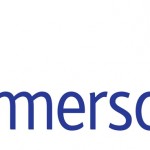Running a restaurant doesn’t start in the kitchen
Key performance indicators are used to monitor key processes and activities, being meant to offer valuable insights on the overall performance of a company. KPIs also help improving the core actions of the organization, allowing thus managers and decision makers to attain the desired outcomes.How can these instruments be applied in a restaurant, though? Doesn’t a restaurant depend on its chef? Well, there’s more here than meets the eye. The food is, indeed, very important, as it defines the restaurant. But there are other factors that need to be taken into account: variety of the menu, atmosphere, service quality, waiting times, reservation procedures and so on. And of course, the target ‘audience’, as every restaurant has a type of customer in mind when it goes into business.
So, KPIs basically show how successful a business is and if not, they help improve the areas that underperform so that it will become successful. For restaurants, it is important to monitor some key aspects:
- Personnel management
- Customer satisfaction
- Market assumptions
- Environment analysis
- Competitive analysis
- Profit
Examples of KPIs that would be useful
We are going to give one detailed example for each category:
Personnel management: % Employee turnover, # Absent days per employee during peak operational periods, # Guests per employee.
# Guests per employee – measures how many guests an employee has to serve at a certain moment. By using this KPI, you make sure that the number of available employees matches the number of guests that need to be served at a certain moment, avoiding thus huge waiting times, overcrowding, delivering poor quality services and customer dissatisfaction. Of course, in order to be accurate, sound practices that measure employees and guests volumes at any point are required.
Customer satisfaction: # Complaints per restaurant order, % Customers satisfied with the time to be served, % Positive feedback from guests.
% Positive feedback from guests – this key performance indicator measures the positive feedback received from guests, in percentages. It regards the overall customer experience, helping managers determine how satisfied the restaurant customers are with the hospitality facilities and the services provided. Unfortunately, the customers’ subjectivity can stand in the way of an accurate measurement, as their emotions can influence the feedback they are about to give.
Market assumptions: # Relative market share, % Brand dominance in market, % Market share.
% Market share – measures the percentage of the target market accounted for by the business, from the overall existing market. In other words, it’s meant to measure business competitiveness within the market. As an example, if you own a French cuisine restaurant, you might want to know what your position in the market is.
Environment analysis: % Restaurants that apply principles of workplace safety and sanitation, $ Spent on equipment, # Additional services provided by restaurant.
# Additional services provided by restaurant – The KPI measures the number of services that the restaurant provides in addition to the main activity. It may turn out to be difficult to quantify the accurate number of services provided when it comes to customized events. Examples of additional services provided by a restaurant can be: catering for special events, EFTPOS machines with cash out function and parking.
Competitive analysis: % Market concentration, % Served market, # New menu items.
# New menu items – Measures the number of new items introduced in the restaurant’s menu list. Thus, it shows the restaurant’s menu diversity, and also the innovation level and pro-activity to customer’s needs and demands. Moreover, it is a measure of the restaurant competitiveness, together with food quality or service quality. These create competitive advantage, as they are hard to copy by competition (usually, recipes for the menu items are a matter of secretiveness).
Profit: $ Restaurant revenue per employee, $ Revenue per available seat hour (RevPASH), % Net profit margin.
% Net profit margin – Measures how much profit a company makes for every $1 it generates in revenue, indicating the operational efficiency and the entity’s ability to control costs and its pricing policy.
If you are interested in more KPI examples from the restaurant industry (or any other for that matter), please visit smartKPIs.com.
Image source:

Tags: Food and Beverage performance, KPI, KPI in Practice, Performance Management






